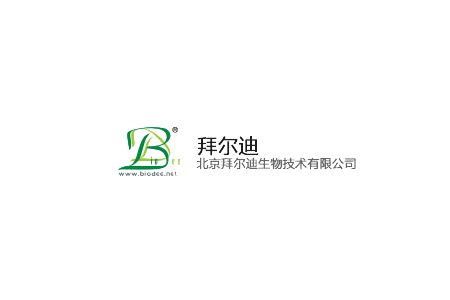

貨號
產(chǎn)品規(guī)格
售價
備注
BN40429R-100ul
100ul
¥2470.00
交叉反應:Human,Mouse(predicted:Rat,Dog,Pig,Cow,Horse) 推薦應用:WB,IHC-F,ICC,IF,Flow-Cyt,ELISA
產(chǎn)品描述
| 英文名稱 | phospho-ZAP70 (Tyr292) |
| 中文名稱 | 磷酸化zeta相關(guān)蛋白70抗體 |
| 別 名 | ZAP70 (phospho Y292); ZAP70 (phospho Tyr292); p-Zap-70(Tyr292); p-Zap-70(Y292); p-ZAP70 (Y292); p-ZAP70 (Tyr292); ZAP-70; ZAP 70; ZAP70; zeta-associated protein 70; ZAP-70=protein tyrosine kinase Syk homolog {SH2-like and C-terminal kinase domains}; Tyrosine-protein kinase ZAP-70; 70 kDa zeta-associated protein; Syk-related tyrosine kinase. SRK; STD; TZK; ZAP70_HUMAN; Tyrosine-protein kinase ZAP-70; 70 kDa zeta-chain associated protein. |
| 產(chǎn)品類型 | 磷酸化抗體 |
| 研究領(lǐng)域 | 腫瘤 細胞生物 信號轉(zhuǎn)導 激酶和磷酸酶 t-淋巴細胞 |
| 抗體來源 | Rabbit |
| 克隆類型 | Polyclonal |
| 交叉反應 | Human, Mouse, (predicted: Rat, Dog, Pig, Cow, Horse, ) |
| 產(chǎn)品應用 | WB=1:500-2000 ELISA=1:5000-10000 IHC-F=1:100-500 Flow-Cyt=1ug/test ICC=1:100-500 IF=1:100-500 (石蠟切片需做抗原修復) not yet tested in other applications. optimal dilutions/concentrations should be determined by the end user. |
| 分 子 量 | 68kDa |
| 細胞定位 | 細胞漿 細胞膜 |
| 性 狀 | Liquid |
| 濃 度 | 1mg/ml |
| 免 疫 原 | KLH conjugated Synthesised phosphopeptide derived from human Zap-70 around the phosphorylation site of Tyr292:DG(p-Y)TP |
| 亞 型 | IgG |
| 純化方法 | affinity purified by Protein A |
| 儲 存 液 | 0.01M TBS(pH7.4) with 1% BSA, 0.03% Proclin300 and 50% Glycerol. |
| 保存條件 | Shipped at 4℃. Store at -20 °C for one year. Avoid repeated freeze/thaw cycles. |
| PubMed | PubMed |
| 產(chǎn)品介紹 | This gene encodes an enzyme belonging to the protein tyrosine kinase family, and it plays a role in T-cell development and lymphocyte activation. This enzyme, which is phosphorylated on tyrosine residues upon T-cell antigen receptor (TCR) stimulation, functions in the initial step of TCR-mediated signal transduction in combination with the Src family kinases, Lck and Fyn. This enzyme is also essential for thymocyte development. Mutations in this gene cause selective T-cell defect, a severe combined immunodeficiency disease characterized by a selective absence of CD8-positive T-cells. Two transcript variants that encode different isoforms have been found for this gene. [provided by RefSeq, Jul 2008]. Function: Tyrosine kinase that plays an essential role in regulation of the adaptive immune response. Regulates motility, adhesion and cytokine expression of mature T-cells, as well as thymocyte development. Contributes also to the development and activation of primary B-lymphocytes. When antigen presenting cells (APC) activate T-cell receptor (TCR), a serie of phosphorylations lead to the recruitment of ZAP70 to the doubly phosphorylated TCR component CD247/CD3Z through ITAM motif at the plasma membrane. This recruitment serves to localization to the stimulated TCR and to relieve its autoinhibited conformation. Release of ZAP70 active conformation is further stabilized by phosphorylation mediated by LCK. Subsequently, ZAP70 phosphorylates at least 2 essential adapter proteins: LAT and LCP2. In turn, a large number of signaling molecules are recruited and ultimately lead to lymphokine production, T-cell proliferation and differentiation. Furthermore, ZAP70 controls cytoskeleton modifications, adhesion and mobility of T-lymphocytes, thus ensuring correct delivery of effectors to the APC. ZAP70 is also required for TCR-CD247/CD3Z internalization and degradation through interaction with the E3 ubiquitin-protein ligase CBL and adapter proteins SLA and SLA2. Thus, ZAP70 regulates both T-cell activation switch on and switch off by modulating TCR expression at the T-cell surface. During thymocyte development, ZAP70 promotes survival and cell-cycle progression of developing thymocytes before positive selection (when cells are still CD4/CD8 double negative). Additionally, ZAP70-dependent signaling pathway may also contribute to primary B-cells formation and activation through B-cell receptor (BCR). Subunit: Interacts with NFAM1. Interacts with adapter proteins SLA and SLA2; these interactions negatively regulates T-cell receptor signaling. Interacts with CBLB (By similarity). Interacts with DEF6. Interacts (via SH2 domains) with RHOH; this interaction regulates ZAP70 subcellular localization (By similarity). Interacts with FCRL3. Interacts with VAV1. Interacts with CD247/CD3Z; this interaction docks ZAP70 at the stimulated TCR. Interacts with CBL; this interaction promotes ubiquitination, internalization and subsequent degradation of CD247/CD3Z. Identified in a complex with CBL and UBE2L3. Subcellular Location: Cytoplasm. Cell membrane; Peripheral membrane protein. Note=In quiescent T-lymphocytes, it is cytoplasmic. Upon TCR activation, it is recruited at the plasma membrane by interacting with CD247/CD3Z. Co-localizes together with RHOH in the immunological synapse. RHOH is required for its proper localization to the cell membrane and cytoskeleton fractions in the thymocytes. Tissue Specificity: Expressed in T- and natural killer cells. Also present in early thymocytes and pro/pre B-cells. Post-translational modifications: Phosphorylated on tyrosine residues upon T-cell antigen receptor (TCR) stimulation. Phosphorylation of Tyr-315 and Tyr-319 are essential for ZAP70 positive function on T-lymphocyte activation whereas Tyr-292 has a negative regulatory role. Within the C-terminal kinase domain, Tyr-492 and Tyr-493 are phosphorylated after TCR induction, Tyr-492 playing a negative regulatory role and Tyr-493 a positive. Tyr-493 is dephosphorylated by PTN22. DISEASE: Defects in ZAP70 are the cause of selective T-cell defect (STD) [MIM:176947]. STD is an autosomal recessive form of severe combined immunodeficiency characterized by a selective absence of CD8-type T-cells. Similarity: Belongs to the protein kinase superfamily. Tyr protein kinase family. SYK/ZAP-70 subfamily. Contains 1 protein kinase domain. Contains 2 SH2 domains. SWISS: P43403 Gene ID: 7535 Database links: Entrez Gene: 7535 Human Entrez Gene: 22637 Mouse Omim: 176947 Human SwissProt: P43403 Human SwissProt: P43404 Mouse Unigene: 234569 Human Unigene: 8038 Mouse Important Note: This product as supplied is intended for research use only, not for use in human, therapeutic or diagnostic applications. ZAP70 為慢性淋巴細胞性白血病的預后指標。 |